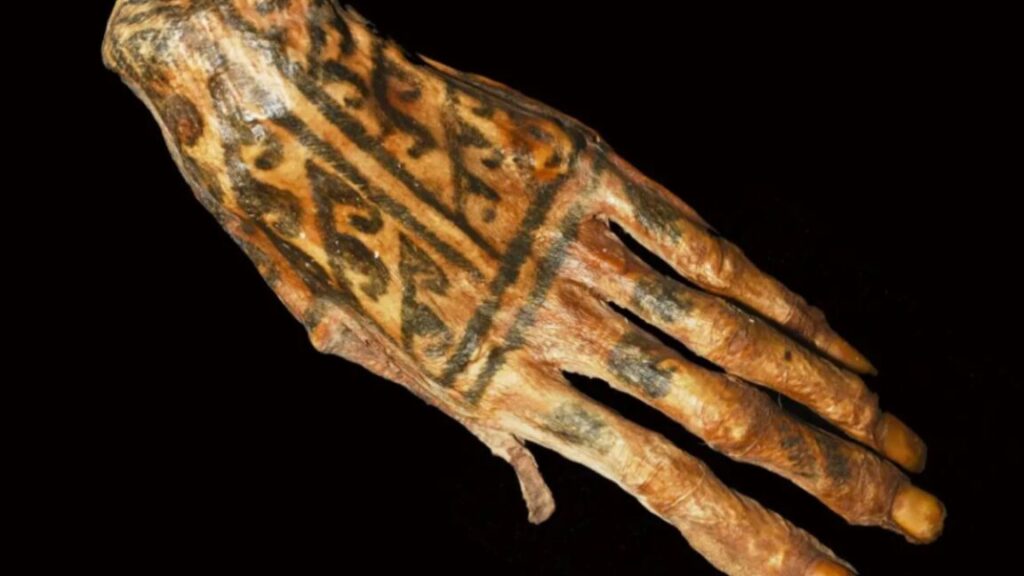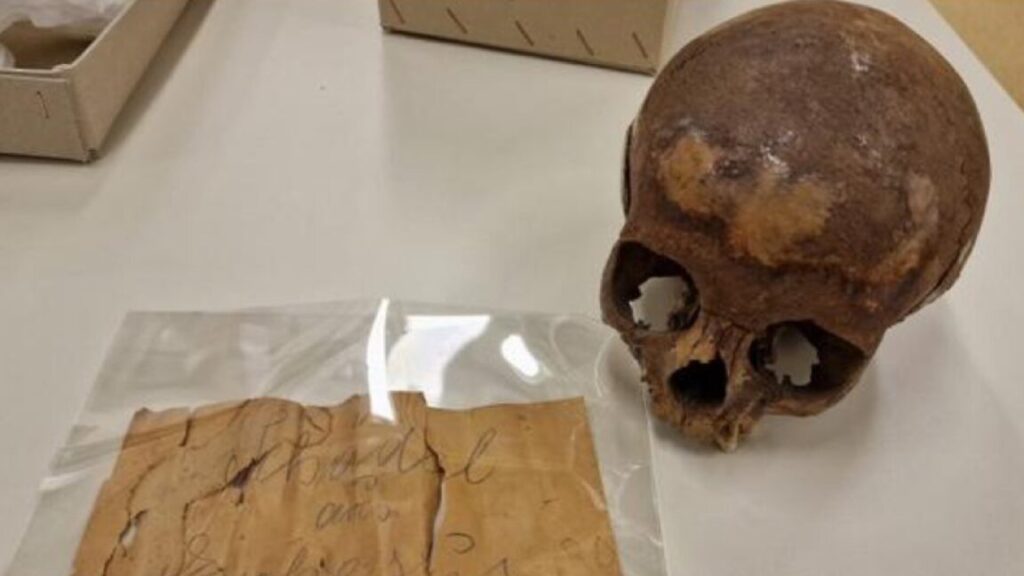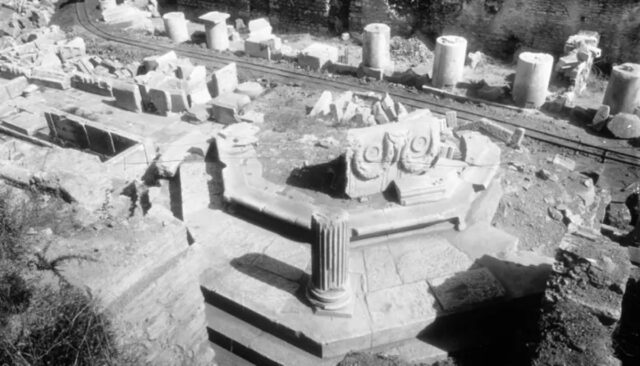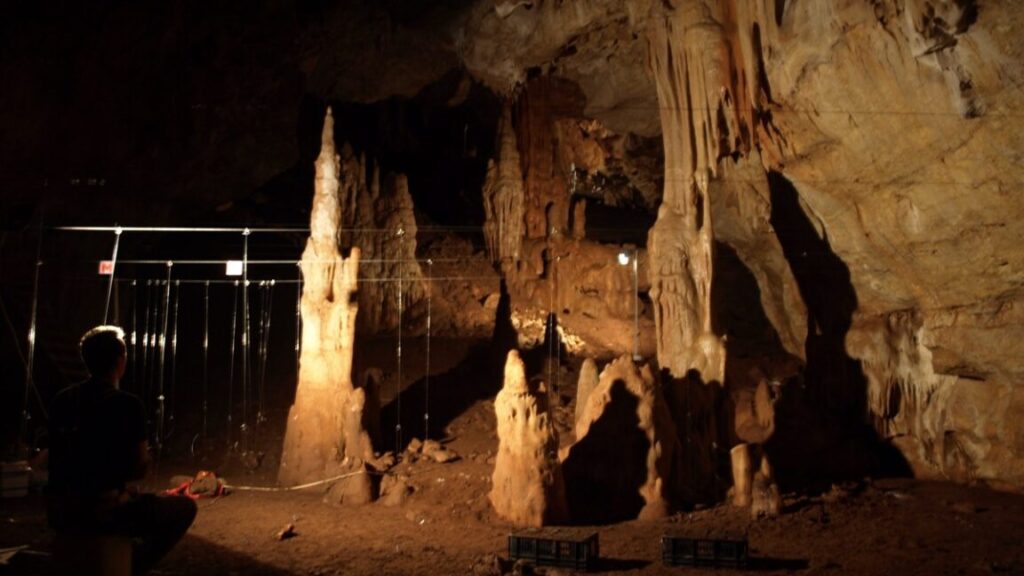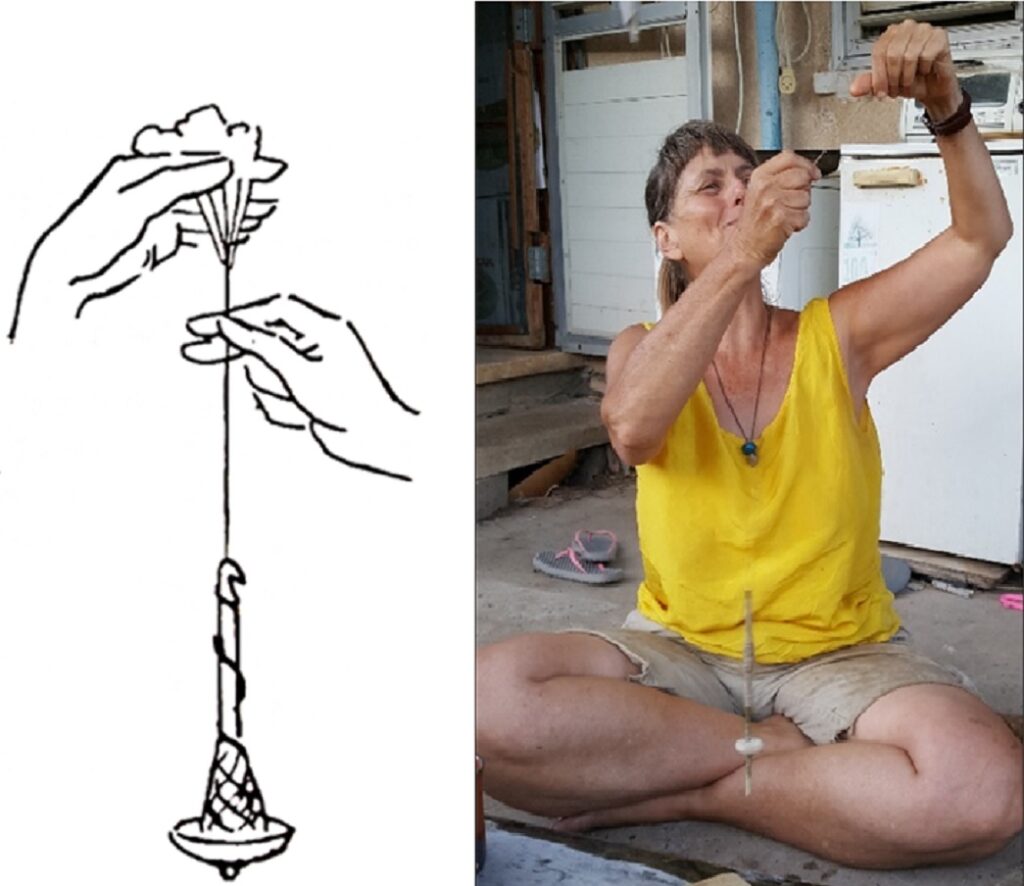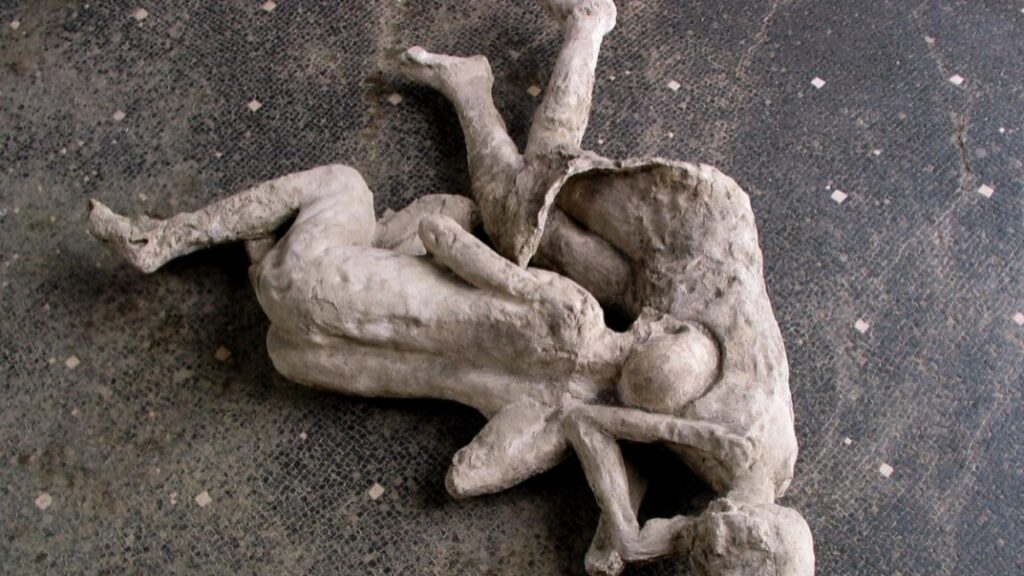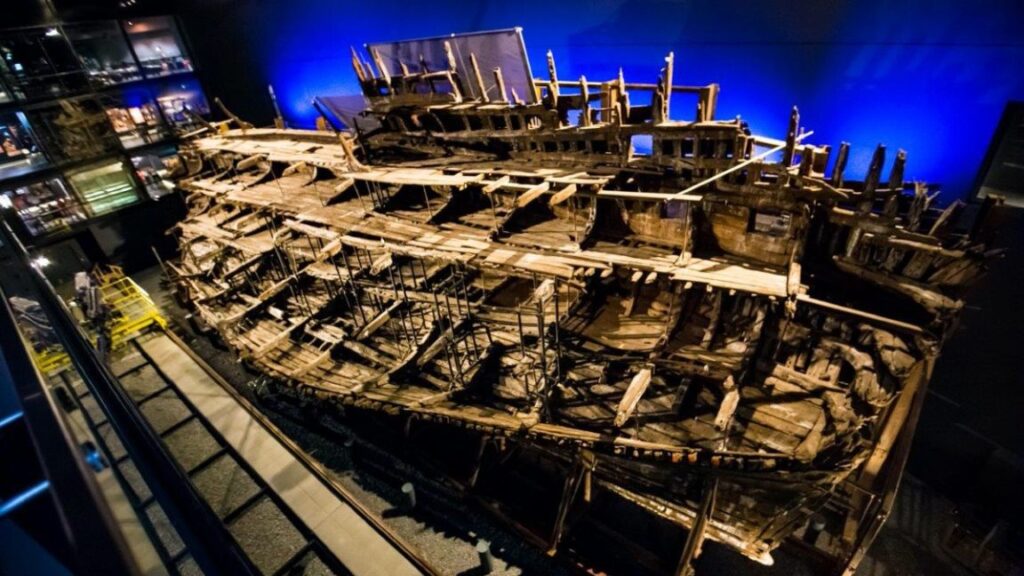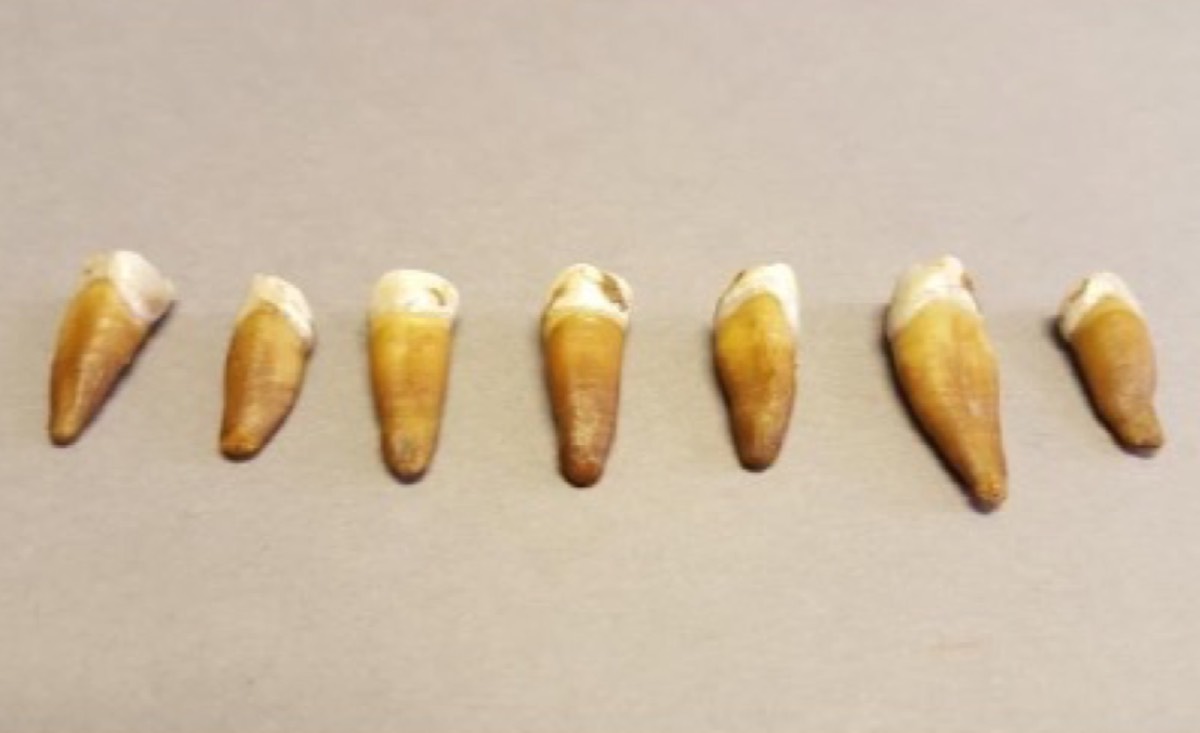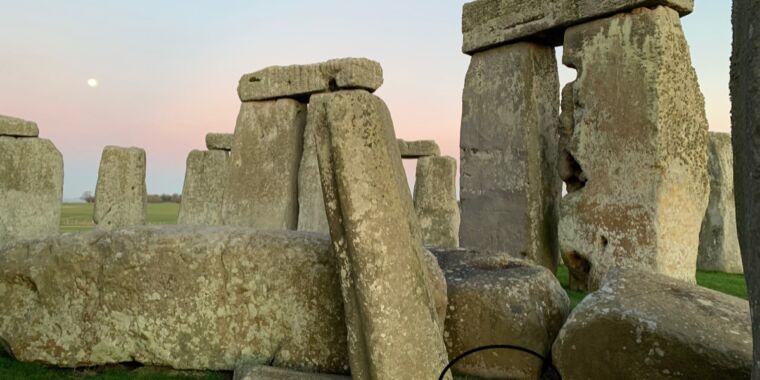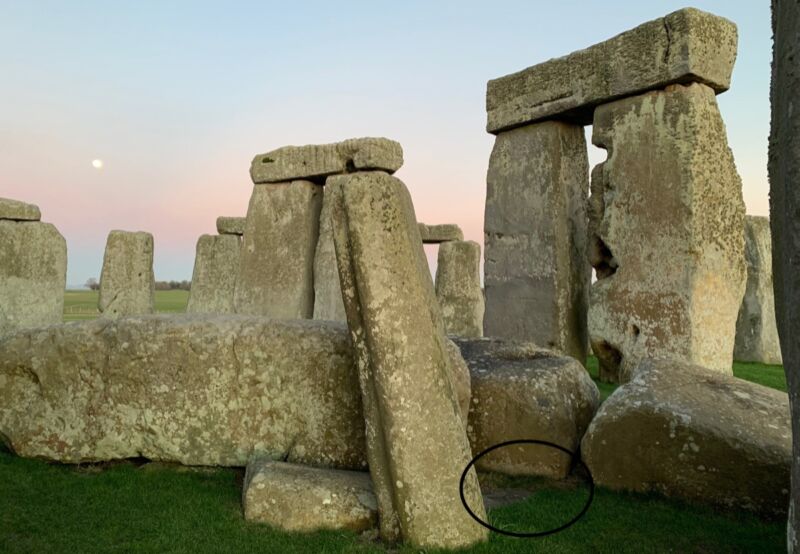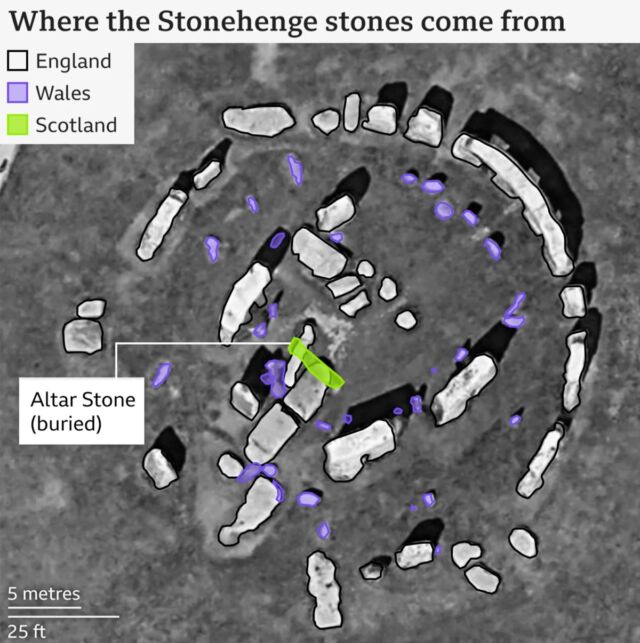Research Roundup: 7 cool science stories we almost missed
Peruvian mummy tattoos, the wobbly physics of spears and darts, quantum “cat states,” and more.
Lasers revealed tattoos on the hand of a 1200-year-old Peruvian mummy. Credit: Michael Pittman and Thomas G Kaye
It’s a regrettable reality that there is never time to cover all the interesting scientific stories each month. In the past, we’ve featured year-end roundups of cool science stories we missed. This year, we’re experimenting with a monthly collection. January’s list includes papers on using lasers to reveal Peruvian mummy tattoos; the physics of wobbly spears and darts; how a black hole changes over time; and quantum “cat states” for error correction in quantum computers, among other fascinating research.
Tracking changes in a black hole over time

Left: EHT images of M87from the 2018 and 2017 observation campaigns. Middle: Example images from a general relativistic magnetohydrodynamic (GRMHD) simulation at two different times. Right: Same simulation snapshots, blurred to match the EHT’s observational resolution. Credit: EHT collaboration
In 2019, the Event Horizon Telescope announced the first direct image ever taken of a black hole at the center of an elliptical galaxy, Messier 87 (M87), located in the constellation of Virgo some 55 million light-years away. Astronomers have now combined earlier observational data to learn more about the turbulent dynamics of plasma near M87*’s event horizon over time, according to a paper published in the journal Astronomy and Astrophysics.
Co-author Luciano Rezzolla of Goethe University Frankfurt in Germany likened the new analysis to comparing two photographs of Mount Everest, one year apart. While the mountain’s basic structure is unlikely to change much in that time, one could observe changes in clouds near the peak and deduce from that properties like wind direction. For instance, in the case of M87*, the new analysis confirmed the presence of a luminous ring that is brightest at the bottom, which in turn confirmed that the rotational axis points away from Earth. “More of these observations will be made in the coming years and with increasing precision, with the ultimate goal of producing a movie of what happens near M87*,” said Rezolla.
Astronomy and Astrophysics, 2025. DOI: 10.1051/0004-6361/202451296 (About DOIs).
Lasers reveal Peruvian mummy tattoos
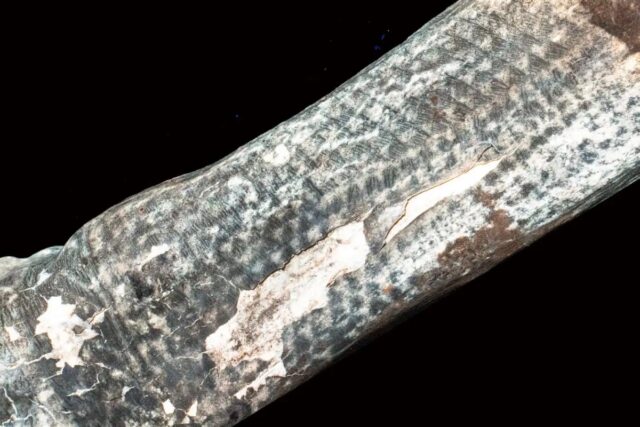
A tattooed forearm of a Chancay mummy. Credit: Michael Pittman and Thomas G Kaye
Humans across the globe have been getting tattoos for more than 5,000 years, judging by traces found on mummified remains from Europe to Asia and South America. But it can be challenging to decipher details of those tattoos, given how much the ink tends to “bleed” over time, along with the usual bodily decay. Infrared imaging can help, but in an innovative twist, scientists decided to use lasers that make skin glow ever so faintly, revealing many fine hidden details of tattoos found on 1,200-year-old Peruvian mummies, according to a paper published in the Proceedings of the National Academy of Sciences.
It’s the first time the laser-stimulated fluorescence (LSF) technique has been used on mummified human remains. The skin’s fluorescence essentially backlights any tattoos, and after post-processing, the long-exposure photographs showed white skin behind black outlines of the tattoo art—images so detailed it’s possible to measure density differences in the ink and eliminate any bleed effects. The authors determined that the tattoos on four mummies—geometric patterns with triangles and diamonds—were made with carbon-based black ink skillfully applied with a pointed object finer than a standard modern tattoo needle, possibly a cactus needle or sharpened bone.
PNAS, 2025. DOI: 10.1073/pnas.2421517122 (About DOIs).
Sforza Castle’s hidden passages
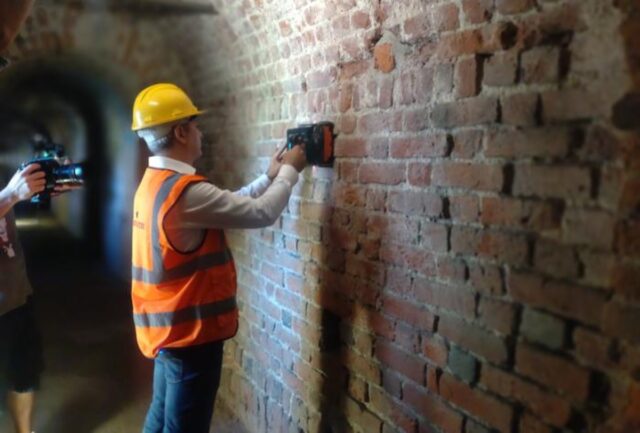
Ground-penetrating radar reveals new secrets under Milan’s Sforza Castle Credit: Politecnico di Milano
Among the many glories of Milan is the 15th-century Sforza Castle, built by Francesco Sforza on the remnants of an earlier fortification as his primary residence. Legends about the castle abound, most notably the existence of secret underground chambers and passages. For instance, Ludovico il Moro, Duke of Milan from 1494–1499, was so heartbroken over the loss of his wife in childbirth that he used an underground passageway to visit her tomb in the Basilica of Santa Maria delle Grazie—a passageway that appears in the drawings of Leonardo da Vinci, who was employed at the court for a time.
Those underground cavities and passages are now confirmed, thanks to a geophysical survey using ground-penetrating radar and laser scanning, performed as part of a PhD thesis. Various underground cavities and buried passageways were found within the castle’s outer walls, including Ludovico’s passageway and what have may have been secret military passages. Those involved in the project plan to create a “digital twin” of Sforza Castle based on the data collected, one that incorporates both its current appearance and its past. Perhaps it will also be possible to integrate that data with augmented reality to provide an immersive digital experience.
Physics of wobbly spears and darts
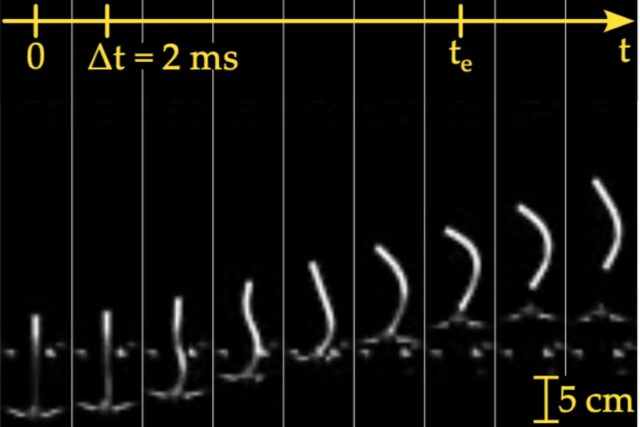
Image sequence of a 100-mm-long projectile during a typical ejection in experiments. Credit: G. Giombini et al., 2025
Among the things that make humans unique among primates is our ability to throw various objects with speed and precision (with some practice)—spears or darts, for example. That’s because the human shoulder is anatomically conducive to storing and releasing the necessary elastic energy, a quality that has been mimicked in robotics to improve motor efficiency. According to the authors of a paper published in the journal Physical Review E, the use of soft elastic projectiles can improve the efficiency of throws, particularly those whose tips are weighted with a mass like a spearhead.
Guillaume Giombini of the Université Côte d’Azur in Nice, France, and co-authors wanted to explore this “superpropulsion” effect more deeply, using a combination of experimental data, numerical simulation, and theoretical analysis. The projectiles they used in their experiments were inspired by archery bows and consisted of two flat steel cantilevers connected by a string, essentially serving as springs to give the projectile the necessary elasticity. They placed a flat piece of rigid plastic in the middle of the string as a platform. Some of the projectiles were tested alone, while others were weighted with end masses. A fork held each projectile in place before launch, and the scientists measured speed and deformation during flight. They found that the wobble produced by the weighted tip projectiles yielded a kinetic energy gain of 160 percent over more rigid, unweighted projectiles.
Physical Review E, 2025. DOI: 10.1103/PhysRevE.00.005500 (About DOIs).
Quantum “cat states” for error detection

Left to right: UNSW researchers Benjamin Wilhelm, Xi Yu, Andrea Morello, and Danielle Holmes. Credit: UNSW Sydney/CC BY-NC
The Schrödinger’s cat paradox in physics is an excellent metaphor for the superposition of quantum states in atoms. Over the last 20 years, physicists have managed to build various versions of Schrödinger’s cat in the laboratory whereby two or more particles manage to be in two different states at the same time—so-called “cat states,” such as six atoms in simultaneous “spin up” and “spin down” states, rather like spinning clockwise and counterclockwise at the same time. Such states are fragile, however, and quickly decohere. Physicists at the University of New South Wales came up with a fresh twist on a cat-state that is more robust, according to a paper published in the journal Nature Physics.
They used an antimony atom embedded within a silicon quantum chip. The atom is quite heavy and has a large nuclear spin that can go in eight directions rather than just two (spin up and spin down). This could help enormously with quantum error correction, one of the biggest obstacles in quantum computing, because there is more room for error in the binary code. “As the proverb goes, a cat has nine lives,” said co-author Xi Yu of UNSW. “One little scratch is not enough to kill it. Our metaphorical ‘cat’ has seven lives: it would take seven consecutive errors to turn the ‘0’ into a ‘1.’” And embedding the atom in a silicon chip makes it scalable.
Nature Physics, 2025. DOI: 10.1038/s41567-024-02745-0 (About DOIs).
New twist on chain mail armor

Credit: Wenjie Zhou
Scientists have developed a new material that is like “chain mail on steroids,” capable of responding as both a fluid or a solid, depending on the kind of stress applied, according to a paper published in the journal Science. That makes it ideal for manufacturing helmets or other protective gear, as well as biomedical devices and robotics components. The technical term is polycatenated architected materials (PAMs). Much like how chain mail is built from small metal rings linked together into a mesh, PAMs are composed of various interlocking shapes that can form a wide range of different 3D patterns.
The authors were partly inspired by the lattice structure of crystals; they just replaced fixed particles with rings or cage-like shapes made out of different materials—such as acrylic polymers, nylon, or metals—to make small 3D-printed structures small enough to fit in the palm of one’s hand. They then subjected these materials to various stressors in the laboratory: compression, a lateral shearing force, and twisting. Some of the materials felt like hard solids, others were squishier, but they all exhibited the same kind of telltale transition, behaving more like a fluid or a solid depending on the stressor applied. PAMs at the microscale can also expand or contract in response to electrical charges. This makes them a useful hybrid material, spanning the gap between granular materials and elastic deformable ones.
W. Zhou et al., Science, 2025. DOI: 10.1126/science.adr9713 (About DOIs).
Kitty robot mimics headbutts
Any cat lover will tell you that cats show humans affection by rubbing their heads against the body (usually shins or hands). It’s called “bunting,” often accompanied by purring, and it’s one of the factors that make companion animal therapy so effective, per the authors of a paper published in ACM Transactions on Human-Robot Interactions. That’s why they built a small robot designed to mimic bunting behavior, conducting various experiments to assess whether human participants found their interactions with the kitty-bot therapeutic. The robot prototypes were small enough to fit on a human lap, featuring a 3D-printed frame and a head covered with furry polyester fabric.
The neck needed to be flexible to mimic the bunting behavior, so the authors incorporated a mechanism that could adjust the stiffness of the neck via wire tension. They then tested various prototypes with university students, setting the neck stiffness to low, high, and variable. The students said they felt less tense after interacting with the robots. There was no significant difference between the settings, although participants slightly preferred the variable setting. We know what you’re thinking: Why not just get an actual cat or visit your local cat cafe? The authors note that many people are allergic to cats, and there is also a risk of bites, scratches, or disease transmission—hence the interest in developing animal-like robots for therapeutic applications.
ACM Transactions on Human-Robot Interactions, 2025. DOI: 10.1145/3700600 (About DOIs).
Jennifer is a senior writer at Ars Technica with a particular focus on where science meets culture, covering everything from physics and related interdisciplinary topics to her favorite films and TV series. Jennifer lives in Baltimore with her spouse, physicist Sean M. Carroll, and their two cats, Ariel and Caliban.
Research Roundup: 7 cool science stories we almost missed Read More »
